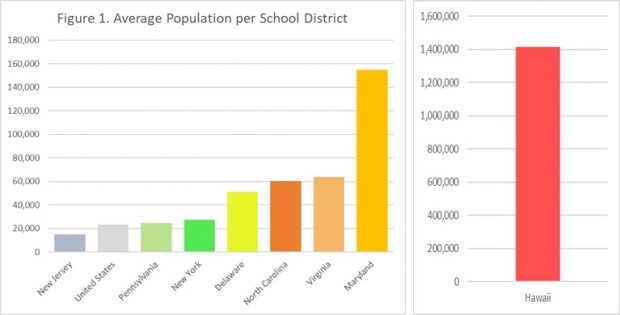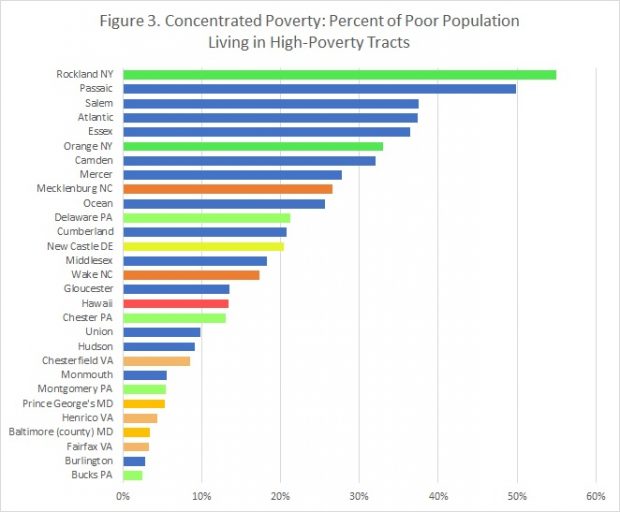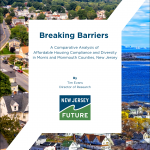New Jersey Future Blog
Does School District Fragmentation Support Residential Segregation?
November 9th, 2020 by Tim Evans
Geography of Equity and Inclusion Series. There are many causes of racial and economic segregation in New Jersey. In our Geography of Equity and Inclusion series we look at some of the issues and dynamics that help us better define the problem, its causes, and system changes needed for reversing. Today’s installment looks at the relationship between school district fragmentation and the role it may play in fostering and maintaining a racially and economically segregated state.
New Jersey has an overabundance of small school districts when compared nationally
The level of government at which public schools are operated and funded varies widely from one part of the country to another. New Jersey’s public school landscape is particularly fragmented—it averages 28 school districts per county, the most of any state, and averages just under 15,000 residents per school district, well below the national average of 23,344. New Jersey Future has written about how New Jersey’s fragmented collage of public school districts leads to land-use incentives that discourage residential development. We are interested in exploring whether this fragmented system may also contribute to residential segregation, both by income and by race.
New Jersey Future has compared New Jersey’s 21 counties with a set of counties in nearby states (including some that are major destinations for New Jersey out-migrants) where the provision of public education is organized differently, to see if the degree of fragmentation appears to be related to the degree to which certain disadvantaged groups (lower-income, Black, and Hispanic populations) tend to be concentrated in relatively few neighborhoods. We included in the comparison a number of counties in states where schools are run at the county level, as well as looking at statewide data in Hawaii, which is unique in having a single statewide school district. County-run school districts—as in Maryland, Virginia, and North Carolina—generally serve much larger populations than those run at the sub-county level, as they are in New Jersey, New York, Pennsylvania, and Delaware (see graphic).

There is a relationship between district fragmentation and segregation
The results of our analysis strongly suggest a relationship between the degree of fragmentation in the organization of public education and the degree of residential segregation. The same incentives that intensify both competition for commercial and industrial properties and resistance to residential development when the units of competition are smaller also appear to result in higher degrees of segregation by race and by income. For example, when looking at what percent of a county’s poor population lives in a high-poverty neighborhood (see graphic), it is counties in New Jersey and New York—the two states with the most fragmented systems of public education—that dominate the top of the list. Meanwhile, the counties with countywide school systems are generally clustered near the bottom. Even the two North Carolina counties, which are each dominated by a single large city, outperform many of the New Jersey counties on the list, despite the fact that large cities are where high-poverty neighborhoods are most frequently found.

Results are similar for segregation by race, where counties with countywide school districts tend to have smaller percentages of their Black and Hispanic residents living in majority-Black or majority-Hispanic neighborhoods, respectively, relative to the overall sizes of their minority populations than is true in counties with more fragmented school districts like New Jersey’s.
More localized responsibility for school funding appears to make discriminatory impulses not only more of a cold, calculated fiscal strategy but also easier to carry out via localized land-use decision-making. If we want to address New Jersey’s status as one of the most segregated states in the country, mitigating these incentives by organizing and funding public education at a higher level of government might be a good place to start.
See the full report here.
Related Posts
Tags: education, equity, geography of equity and inclusion, inclusion, New Jersey segregation, public education, residential, schools
















